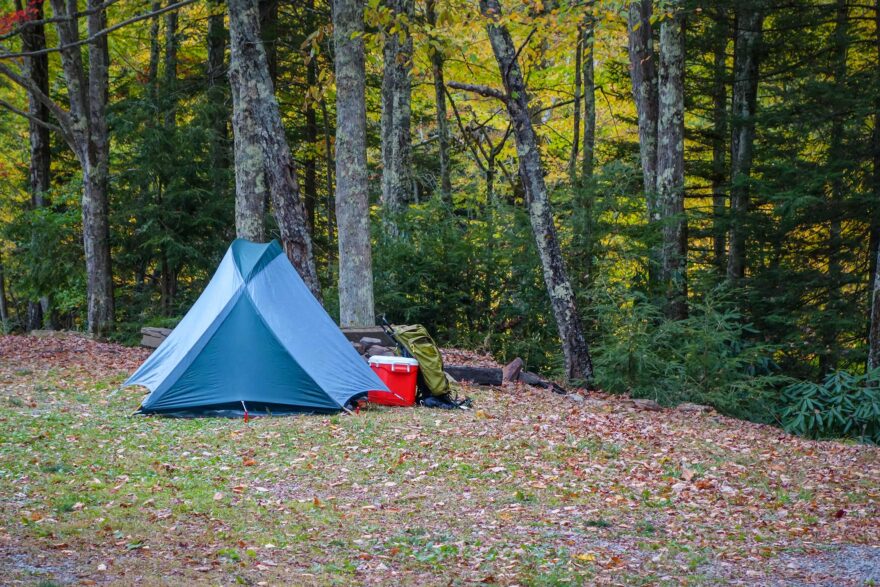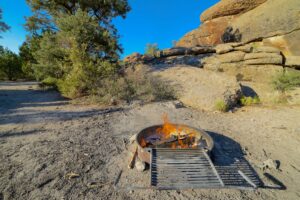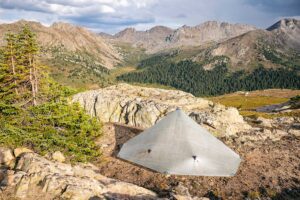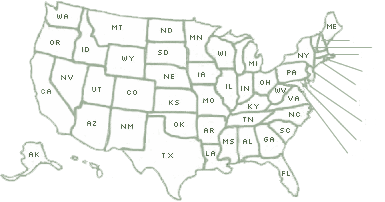
The East Coast has ample opportunities for dispersed camping. (Image by Wirestock Creators, Shutterstock)
When many of us think of camping, we imagine getting outside in nice weather and listening to the sounds of nature. Unfortunately, there are many places where this is not the case — with campgrounds booked up months in advance and overcrowding in popular recreation areas. Noisy campground neighbors can make sleeping under the stars a little less idyllic. If you are willing to forego some amenities, dispersed camping may just be your answer to a peaceful campout.
What is Dispersed Camping?
Dispersed camping is camping outside of a designated campground, typically done on U.S. National Forest Service land or Bureau of Land Management (BLM) land. When thinking of dispersed camping, imagine the solitude and lack of amenities of backpacking paired with the convenience of car camping. (Backpacking can also be a form of dispersed camping, but for the sake of this discussion, we are going to focus on dispersed camping with your car.)
What Should I Bring?
A dispersed camping trip requires all of your normal car camping gear (tent, cooking utensils, chairs, etc.) plus some extras due to the lack of amenities like bathrooms and clean water spouts. Plan to bring in all the water you need with you or pack a quality water filter with a large container to fill if you know there is a filterable freshwater lake or stream nearby.
Another consideration is waste, and I’m not just talking about trash! Without bathrooms, the woods are going to be your facilities. Peeing in the woods is pretty easy, but pooping can get a little more complicated. Check out this article from REI about using the bathroom in the woods or watch this video below. And don’t forget the toilet paper!
If you plan on having a campfire, check the local regulations and fire risk and be prepared to put out the fire with a bucket of water that you brought in with you. It is also a good idea to bring extra phone batteries and a paper map, as many dispersed camping areas are out of cell phone signal range.
Where Can I Dispersed Camp?
Dispersed camping can typically be done just off any national forest or BLM land road, but there are some restrictions.
To explore areas of U.S. Forest Service land available for dispersed camping, head over to the U.S. Department of Agriculture website and use the “Find A Forest” tool on its home page to locate the closest national forest to your destination. It will give you information and regulations for dispersed camping at your regional national forest. If you have any questions, do not hesitate to contact the forest’s ranger station for more details.

A campfire in the Big Rock Wilderness area of Nevada, which is run by the Bureau of Land Management. (Image by Dominic Gentilcore PhD, Shutterstock)
BLM land is mostly in the western part of the continental United States and Alaska. Due to vast areas of BLM land in the West, this is a great area to dispersed camp. You can find information about dispersed camping on BLM lands from their website as well as use their interactive map here to plan your stay.
As far as choosing a place to pitch a tent when you reach your designated land area, check the local regulations for necessary distance away from bodies of water and trailheads. If you can, try to find an area already camped on and without a lot of vegetation in order to minimize the impact to plants and wildlife. Also, be aware of flood planes, forest fire risk, and what type of animals live in the area. Waking up to a flooding tent or unexpected four-legged visitor is not something you want to experience during what is supposed to be a relaxing time in the wilderness.
Responsible Dispersed Camping
As stated before, try not to smash local vegetation, give wildlife plenty of room and keep music low if used at all. Remember, when we camp, we are stepping into the homes of many wild animals and noise pollution has an effect just like physical trash.

A tent is set up at the U.S. Forest Service’s Hunter-Fryingpan Wilderness in Colorado. (Image by Cavan-Images, Shutterstock)
Pack out what you packed in and always follow the 7 Leave No Trace Principles.
Leave No Trace Principles
1. Plan Ahead & Prepare
2. Travel & Camp on Durable Surfaces
3. Dispose of Waste Properly
4. Leave What You Find
5. Minimize Campfire Impacts
6. Respect Wildlife
7. Be Considerate of Others
Wherever you decide to camp, take the time to research the area and then enjoy the fruits of your labor out in our big beautiful world. Happy camping!
Lauren Loria-Corbat is a writer and photographer who skis, rock climbs, hikes and backpacks. She loves introducing people to outdoor sports through journalism as well as hands-on teaching as a ski and climbing instructor.
 Your Privacy Choices
Your Privacy Choices

